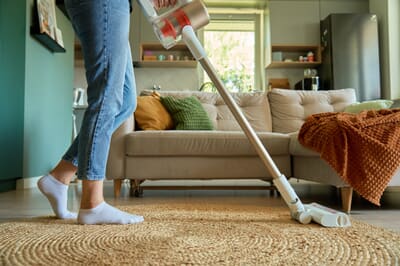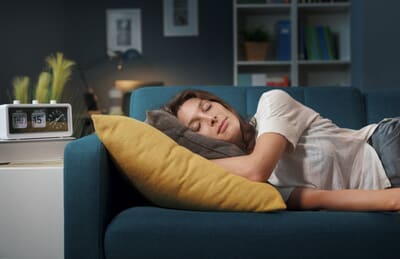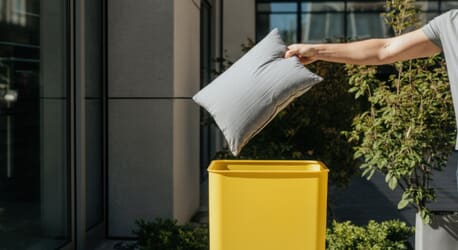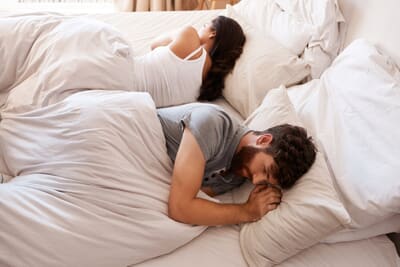The most recent bed bug outbreak has had people questioning their hotels and where they stay when travelling. The most iconic and extravagant hotels in Las Vegas were recently hit by an outbreak, as has Paris, leading to warnings for travellers to take care when travelling and returning home to avoid further spreading the bugs.
But it got us thinking. How clean are hotels? What are some of the most unhygienic areas of a hotel room and just how can we make sure we keep our clothes, and ourselves, safe, without bringing any pesky critters home?
Some of the most unhygienic areas of a hotel could surprise you.
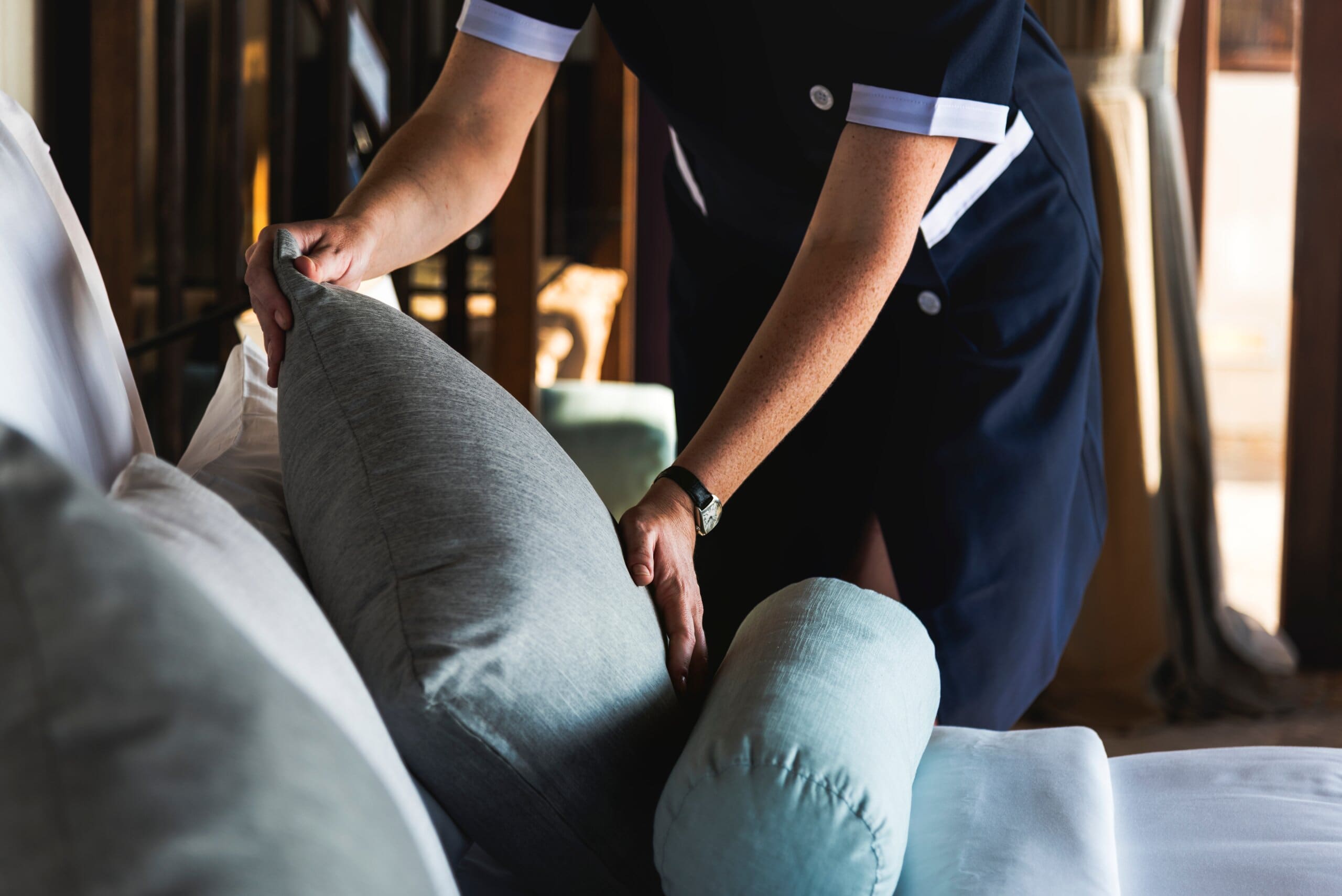
The areas in a hotel room that aren’t as hygienic as you might think
When you think of the ‘dirtiest’ areas in a hotel, you would be forgiven for thinking of the remote. While TV remotes absolutely do hold huge amounts of bacteria, there are other areas to watch out for too.
In fact, in our socks in the bed study, we discovered that socks can contain more bacteria than remotes, so make sure you take yours off before getting into your hotel bed, lest you transfer that bacteria to your sheets…
With housekeepers having to clean an enormous amount of rooms in little time, often no more than 30 minutes, it’s no surprise that some places could escape attention or a deep clean, which doesn’t take place daily.
Throws and comforters aren’t always cleaned before a guest swap
We scoured Reddit to see if people questioned whether the throw or comforter (the blanket that is placed on top of the bedsheets) was washed after each room use. Our findings revealed that numerous individuals employed in the hotel industry often reported that these items were neglected in the cleaning process.
In fact, they are typically only cleaned when the room is deep cleaned which could be around once a month.
Consider the nightly ritual of our bodies shedding skin cells and secreting body oils, including sweat and saliva. These substances inevitably find their way onto the bedspread, as well as the comforter or throw, providing an ideal breeding ground for bacterial growth and dust mites.
One study took this unsettling scenario to another level, suggesting that bed sheets may harbour bacteria levels comparable to those found on a toilet seat.
Dust mites can also live in bedsheets and, of course, that comforter, growing in numbers the longer that is left unwashed. Dust mites can live in their millions in the bedding, carpet and even the drapes or curtains, and can trigger allergies, particularly for those with respiratory problems.
Therefore, the same warning applies to all the cosy stuff in the room, emphasising the importance of regular cleaning of bedding, throws and more to keep hotel guests healthy and comfy.
The sofa or chairs in hotel rooms could be ‘germ motorways’
According to one Redditor’s suggestion, you should “use a towel or sheet on the chairs or sofa, a LOT of people sit on them naked.” Similar to the bedspread, soft furnishings such as the chair or sofa in your room can harbour bacteria as well as dust mites.
It’s unlikely that the sofa or chair is receiving a steam clean after each use. Studies testing chairs in office environments - similar to hotel rooms due to multiple people using them - have identified chairs as ‘germ motorways’, and bacteria found on these chairs include Staphylococcus aureus. This bacteria can cause skin infections and pass from one person to another.
Wooden or plastic chairs don’t escape the bacteria or those aforementioned creepy critters. Bed bugs can be found on wooden surfaces and they can lay their eggs in the crevices unseen to the naked eye, or those areas that are not cleaned regularly.

Fabric headboards can be magnets for germs
You might not realise but fabric headboards, in particular, can hold bacteria including dead skin, body oils, dust mites and, of course, bed bugs.
Fabric headboards, unlike their metal and wooden counterparts, are much harder to clean. They should be vacuumed regularly - ideally after every stay - as well as steam cleaned. Steam cleaning is extremely important, particularly when it comes to bed bugs as heat helps stop the infestation.
Bed bugs prefer soft furnishings - although that’s not to say they can’t live on hard furnishings too - and can accumulate within the headboard and lay eggs. If that’s the case, they can be very difficult to remove, which is why professionals will have to get involved.
Similarly, dust is attracted to fabric and can pool in the headboard, making it a very uncomfortable stay for people with respiratory problems, especially if the headboard hasn’t been cleaned properly.
The curtains or drapes could harbour bacteria
Another area that could be considered unhygienic is the curtains or drapes, especially ones that reach the floor. If they are large or bulky, they will likely only be cleaned as part of the room’s deep clean, which means that bacteria could live on them or even crawl up them…
In a normal household, curtains should be deep cleaned every 3-6 months. However, that should increase significantly where there is more footfall, such as hotel rooms. Ideally, they should be cleaned a minimum of three times a year.
Similarly, carpets can also hold bacteria - more than you might think. One study discovered that the shoes tested had an average of 421,000 units of bacteria on the outside of the shoe. And, if you think about how many other people have stayed in that room before you and the number of shoes in that room, it highlights just how dirty those carpets could be. So, we recommend wearing slippers or even socks when in hotel rooms.
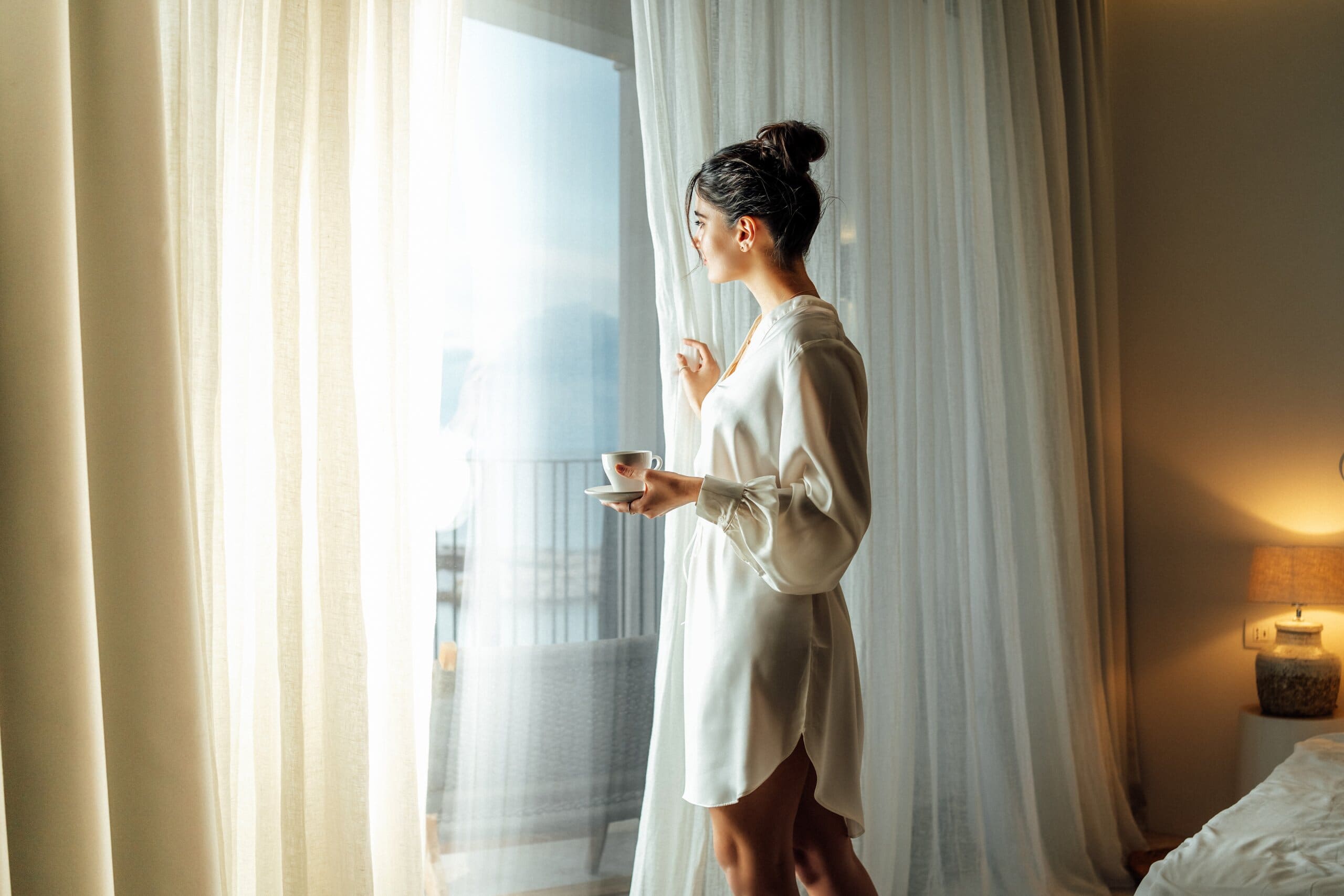
But what does all of the above mean for your next hotel stay?
Seven ways to make soft furnishings more sanitary during your next hotel stay
We are not saying you should never stay in a hotel again, far from it. Experiencing new places is one of the many things that is exciting about travelling!
However, understanding which areas of your room to look out for and even wiping down yourself can help you sleep - especially if you are prone to allergies triggered by dust mites which can stop you from falling and staying asleep.
1. Take the throw off the bed and place on a chair or an area that you don’t use
When you get into a hotel room, remove the comforter or throw from the bed and fold it over in an area that you don’t need to use. While the bedsheets will be washed after each use, it’s likely the comforter or throw will not have been, and is saved for the deep clean.
With that in mind, it’s best to just remove it as that could harbour bacteria that can transfer to you. The same can be said for any display cushions on the bed as it can be time consuming to remove and wash each cushion cover - so, in some instances, they might have escaped the regular clean.
2. Stay in a hotel room with white linens
White linens are commonly used by hotels but not by all hotels. If you can, opt for hotels that use white linens as, you guessed it, any stains or dirt are going to show up better on white linen than on darker linen.
White linens can show up all manner of dirt and dust, and it makes critters such as bed bugs easier to spot. If you do suspect bed bugs in your hotel room, look out for any red or rusty coloured spots which could be an indication of crushed bugs. Darker spots can also indicate any faeces.
Bed bugs are visible to the naked eye but they are adept at hiding, so they can also be lurking in areas that you wouldn’t typically see.
3. Keep your suitcase off the bed
On that note, always keep your suitcase off the bed. Your suitcase will have been wheeled through the lobby and the elevator, as well as the streets outdoors. Germs can, absolutely, live on hard surfaces which you could then be transferring to the bed, the bedsheets and yourself.
Keep your suitcase on the luggage rack, if they have one, or as near to the door as possible to reduce any risk of transmission.
On that note, you should also check your suitcase for any signs of bed bugs and, when you get home, vacuum your suitcase and wipe down the surface before putting it into storage before your next set of travels. Read our guide on how to prevent bringing bed bugs back from your holiday for more tips and tricks.
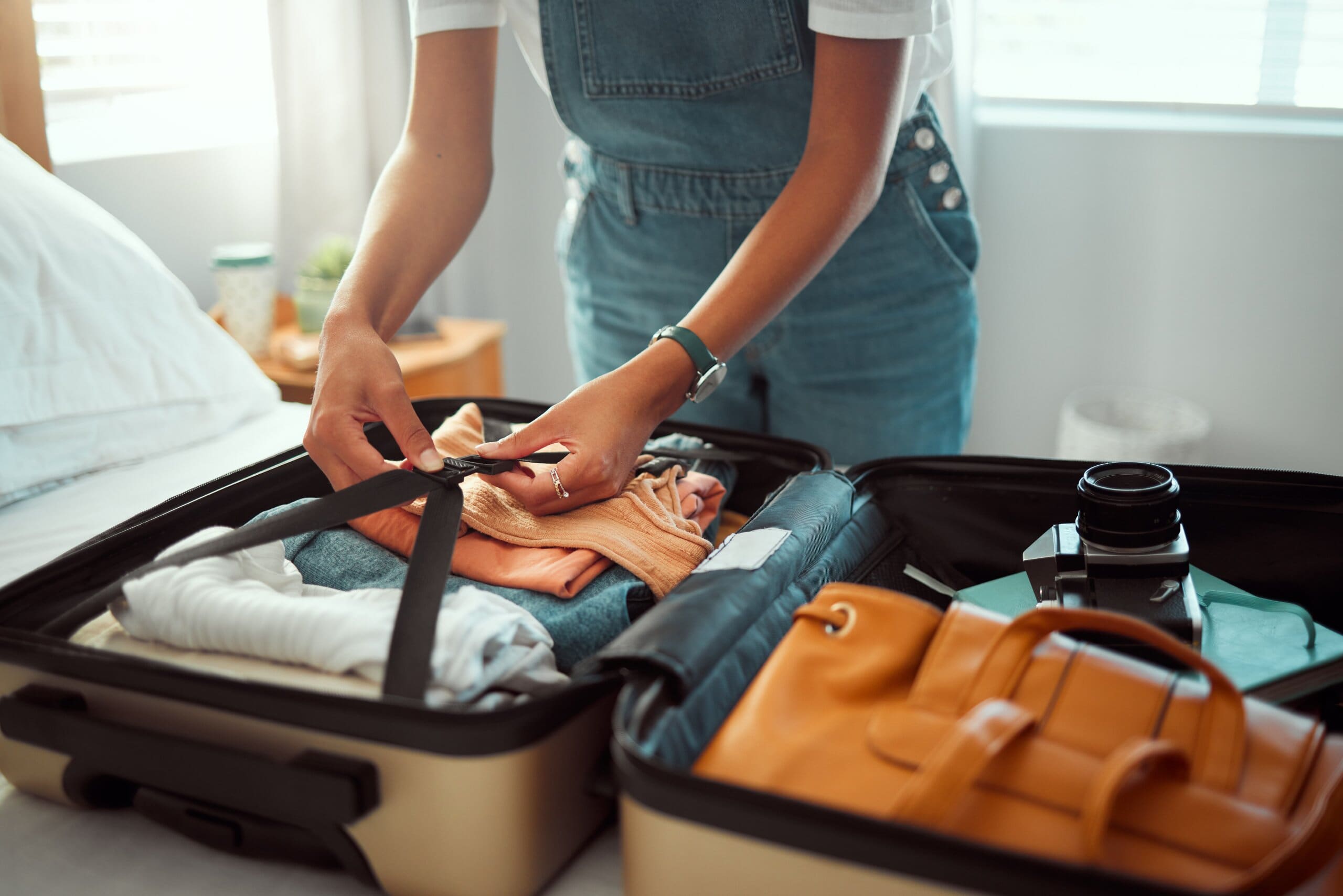
4. Avoid placing damp towels on your bed
We all understand the temptation of leaving your towel on the bed in the hotel room while you are getting ready. However, you should always hang it back up where you got it or, if you want it to dry, hang it over a door, open the window and use the aircon to create a cool wind which should dry it quicker.
A study by microbiologist Charles Gerba, of the University of Arizona, revealed that 90% of the bathroom towels he analysed were contaminated with coliform bacteria, with 14% also hosting E. coli. That bacteria could then transfer to your sheets, while also leaving the bed to become a breeding ground for bacteria - particularly where it is moist.
5. Wipe down any surfaces where you plan to sit
If your room has hard furnishings, make sure to wipe those down before you sit. The same can be said for the remote and the light switches, which have been identified as some of the dirtiest areas in the room. If there are chairs and sofas in the room and you are concerned, you could always do what that Redditor suggested and sit on a towel.
6. Keep your clothes away from the soft furnishings
To protect your clothing as much as possible - certainly from bed bugs - you can hang your clothes up straight away and avoid leaving them on any soft furnishings such as chairs. Alternatively, you can wipe down the hard furnishings before placing any of your items on them.
7. Change your socks before getting into bed
If you are walking along the hotel carpet in your socks, we’d suggest thinking twice before getting into bed with them, even if they do warm up your feet! Carpets can play host to dust mites, dead skin, bed bugs and many other forms of bacteria. While a hoover may make it look clean, those stains could be a breeding ground for bacteria and it’s unlikely the carpet is steam cleaned before each visitor.
We found that socks can be as dirty as door mats, so it’s best to remove or change into a fresh pair before getting into bed.
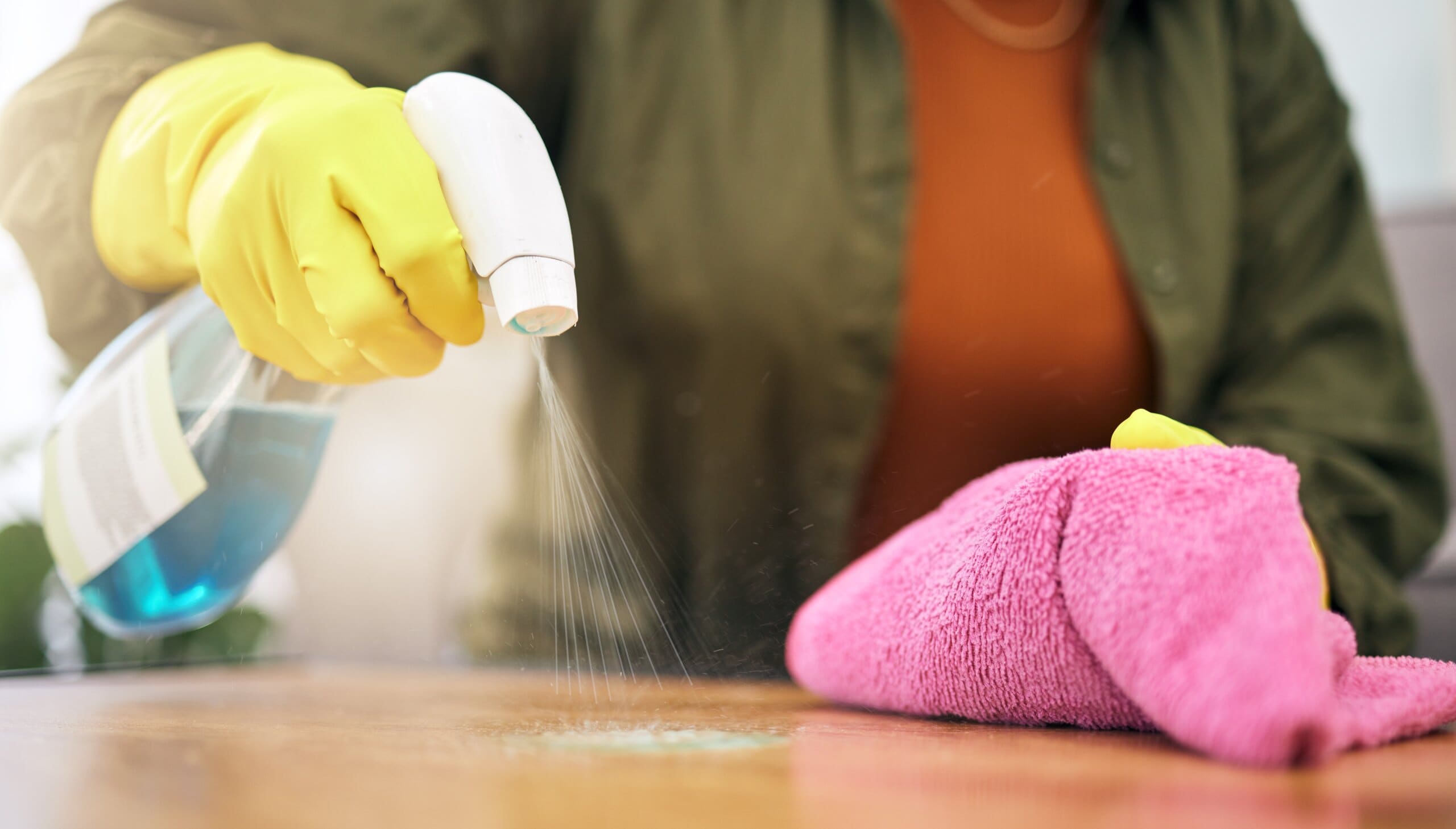
For more information on how to keep your bed and mattress safe, you can read about the essential oils that repel bed bugs and prevent bringing them back after your hotel visit.

